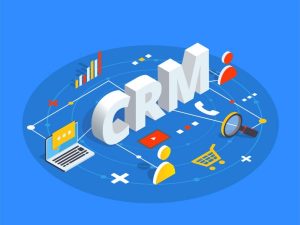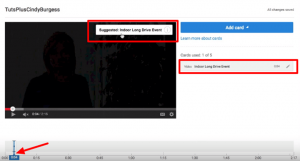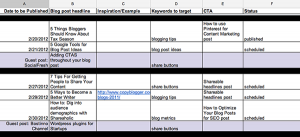Of course, every VC wants to see their portfolio companies grow. But as Scott Maxwell of OpenView Venture Partners points out in a persuasive recent blog (link below), companies that deliver predictable revenue are regarded as even more valuable.
 Now, if you’re still at the pre-revenue stage, your revenue projections have no way of being validated – although they will have hopefully been based on something more substantial than what a prominent investor once colourfully described to me as “rectal research” 😉
Now, if you’re still at the pre-revenue stage, your revenue projections have no way of being validated – although they will have hopefully been based on something more substantial than what a prominent investor once colourfully described to me as “rectal research” 😉
But as soon as your organisation has reached that all important post-startup growth stage and before you start looking for that next wave of expansion capital, you had better start managing by the numbers…
When you think about it, the reasons are obvious: expansion stage investors are properly concerned about the rate at which you’re going to burn up capital. They want evidence that you’ve got a scalable business model, and scalable systems and accurate metrics to support it. In fact, it’s probably going to be a precondition of their investment – or it certainly ought to be.
Focus facilitates creativity
Perhaps paradoxically, organisations with well-structured business models and effective business metrics are actually far better equipped to successfully experiment with new approaches than their freewheeling, make-it-up-as-you-go along peers. They have the ability to test well-thought-through hypotheses against clearly measured outcomes.
Companies with clear models and effective metrics are also in a far better position to identify when and where they need incremental resources, and to confidently project the likely impact of additional investments on both the top and bottom lines. It’s a far more effective approach than throwing headcount or spend at a problem in the hope of a positive result.
Avoiding the resource vortex
Having a clear operational model and a culture of measurement brings many benefits. Clear goals can be set for new initiatives, leading indicators can be clearly identified, and the successful projects can be reinforced as soon as they show clear signs of success and – just as important – unsuccessful projects terminated before they turn into a resource vortex.
Scott’s article spans the full range of metrics – including product development and customer success, but I want to focus attention on the two areas that I see as being critical to top line growth – sales and marketing metrics.
Misses become progressively more expensive
As Scott points out, missed quarters get progressively more expensive. They can have serious knock-on effects on investor confidence, on executive tenure, on employees and on the very survival of the organisation.
My observations suggest that if businesses are to be truly scalable, they need to establish three critical foundations: a clear market focus, a tightly targeted customer focus, and an efficient customer acquisition system.
Clear market focus
Let’s start with market focus: this requires that the whole organisation is aligned around a common consensus regarding which problems you have chosen to solve, what your best customers look like, and where your most promising power sponsors can be found.
Your market focus also needs to clearly define your solution category (in terms your prospects can relate to), your prospect’s compelling reason to act, the alternative options they may consider, and a clearly articulated primary point of differentiation.
You also need to consider your required partners and allies, to carefully think through your channels to market, your key costs-of-sale, and your primary revenue sources. And these elements all need to be tied together with simple metrics.
Let’s be clear: companies never perfect this first time out, but having a documented, testable model based on the best available current information is at least going to point you in the right direction. And the metrics will tell you where and how to adjust.
Tightly targeted customer focus
This is another area where being able to identify patterns of performance is so important. What are the common characteristics of your most valuable customers? And what are the typical roles and responsibilities of the power sponsors who are in the best position to recognise the need for change, and to champion your solution?
If you look closely enough, you’ll inevitably find that traditional demographic segmentation (size, sector and location) only tells a fraction of the story. Structural and situational factors are far more effective in predicting whether or not any given organisation is likely to represent a good target at any particular point in time.
Particularly if you have a specialised solution, it’s almost impossible to buy-in all the information you need from list brokers. There’s simply no substitute for doing your own structured research – or for carefully measuring the quantity and quality of your prospecting database.
Once again, your ideal customer description won’t be perfect first time out. But it’s likely to be at least directionally correct, and capturing structural and situation insights from the field and comparing patterns of success will allow you to progressively refine it.
Efficient customer acquisition system
But having a clear market and customer focus isn’t enough: they need to be encapsulated in a structured customer acquisition system that reflects how and why your target customers choose to buy. In short, it needs to be based around their buying process, and the actions your sales people need to take in order to facilitate it.
It’s particularly important that you define key milestones in the form of essential exit criteria that must be completed before the opportunity is promoted to the next stage of the buying process. These criteria must be based on observable evidence of the prospect’s increasing commitment. Simply tracking sales activity isn’t good enough.
At each stage in this buying journey, you need to understand four key factors: the volume and value of opportunities at each stage in the process, the average conversion rate from one stage to the next, and the average time taken by a winning opportunity to move through each stage.
The conversion rate and velocity measures are particularly important: the accumulation of relatively small incremental improvements in efficiency at each stage can significantly increase customer acquisition capacity (and therefore revenue growth).
Careful customer profiling, rigorous opportunity qualification and the systematic adoption of proven best practices at each stage can significantly improve productivity – particularly if the usual logic is reversed and opportunities are qualified out early unless there is obvious evidence of clear intent and a good solution fit.
Eliminating opportunities that are never likely to close at an early stage in the process frees sales and marketing resources to concentrate on finding and winning more of the tight sort of prospects, rather than chasing chimeras. And of course the lessons learned can be applied to refine the process.
Focus, process and metrics
Having the right focus, process and metrics puts organisations in a significant advantage compared to their less structured competitors – and paves the way towards predictable revenue growth.
But structure does not imply inflexibility: simply documented, well-instrumented processes lend themselves to rapid adaption and evolution based on observed results. In my experience systematically-minded, data-driven organisations are far more effective at learning and improving.
But it requires a culture of measurement and analysis. If you don’t know what you should be measuring or how you should be analysing it, you’ll probably end up with the outcomes you were fearing. So – what are your most effective metrics and analytics?
(282)








